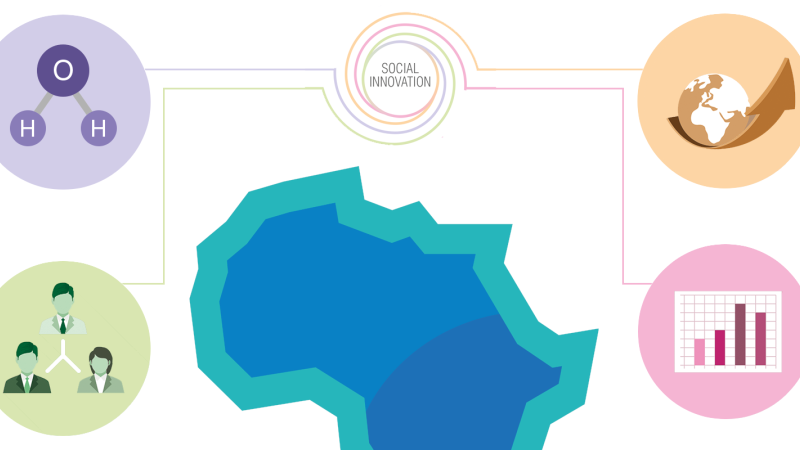
AfriAlliance MOOC#2 Case Studies: Part 4
Following the conclusion of the AfriAlliance MOOC#2, the AfriAlliance partners are delighted to share with you a selection of the excellent final assignments submitted by the participants.
During the final week of the MOOC#2, participants used the lessons that they had learned about social innovation and applied them to a case study that they were familiar within. Using the Social Innovation Factsheet format, and the four AfriAlliance dimensions of social innovation, a range of case studies were covered by the participants.
The AfriAlliance partners have curated a selection of these case studies, which best represent social innovation and the lessons learned during the MOOC#2. Every two weeks, five of these case studies will be shared on the AfriAlliance website and social media. Find Parts 1, 2 and 3 at the bottom of the page!
Case Study #1: Road water harvesting, food security and climate resilience in arid and semi-arid areas, case of Machakos County, Kenya by Bonventure Musambi Makhaya
What cost-effective techniques are available to combat water scarcity in arid and semi-arid areas? This case study takes a look at the impact of water scarcity on affected populations, and highlights several methods that can be used to increase water availability, including road water harvesting.
Case Study #2: Reducing non-revenue water in Kumasi through community monitoring and maintenance by Evans Agyei Ntiamoah
This case study looks at the role of community engagement and citizen monitoring in the reporting of non-revenue water related issues. Additionally, the study details the imporance of capacity building and the training of local populations in reducing avoidable water loss.
Case Study #3: Drinking Water Safety and Security Planning After Tropical Cyclone Idai in Chimanimani, Zimbabwe by Ackmore Muchemwa
With the increasing volatility of weather patterns as caused by climate change, it is vital that water systems are protected from extreme weather, such as cyclones. This report highlights how water safety and security was integrated into recovery plans, and built back better following the disaster.
Case Study #4: Flood risk reduction through appropriate household waste management and removing waste into the drainage networks: A case study of Moundou (Chad) by Moungoue Djanni Hermann
Waste management is a serious challenge in many parts of the world. This case study highlights this issue within Chad, and identifies the key issues to be resolved, as well as several potential solutions.
Case Study #5: Community adaptation to climate change by people living along Themalakane river in Botswana by Goitseone Kebopetswe
Communities living close to (and dependent on) rivers will be significantly affected by climate change, as the unpredictability of rainfall can lead to the drying up of the river, as well as mass flooding. Therefore, communities are having to adapt to this new reality, as detailed in this case study.
Downloads
- Case Study #1 Road water harvesting, food security and climate resilience in arid and semi-arid areas, case of Machakos County, Kenya_Bonventure Musambi Makhaya.pdf (PDF, 453.09 KB)
- Case Study #2 Reducing non-revenue water in Kumasi through community monitoring and maintenance_Evans Agyei Ntiamoah.pdf (PDF, 395.58 KB)
- Case Study #3 Drinking Water Safety and Security Planning After Tropical Cyclone Idai in Chimanimani Zimbabwe_Ackmore Muchemwa.pdf (PDF, 574.58 KB)
- Case Study #4 Flood risk reduction through appropriate household waste management and removing waste into the drainage networks A case study of Moundou Chad_Moungoue Djanni Hermann.pdf (PDF, 453.29 KB)
- Case Study #5 Community adaptation to climate change by people living along Themalakane river in Botswana_Goitseone Kebopetswe.pdf (PDF, 542.17 KB)
